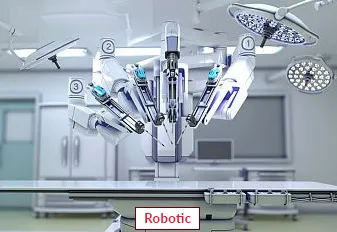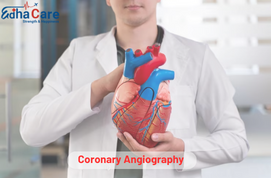Robotic Heart Bypass Surgery

Robotic Heart Bypass Surgery is a surgical procedure that improves blood flow to the heart for patients with blocked coronary arteries. Robotic Heart Bypass Surgery is a relatively new minimally invasive surgical technique. It is a less invasive alternative to conventional open heart surgery where the breastbone, or sternum, is sawn in half. It uses surgical instruments and a camera attached to the arms of a robotic machine, which are controlled by the heart surgeon via a computer console. This surgery may result in a reduced length of stay in the hospital and a faster return to work and activities of daily living.
Book an AppointmentAbout Robotic Heart Bypass Surgery
Robotic Heart Bypass Surgery is a surgical procedure that improves blood flow to the heart for patients with blocked coronary arteries.
Indications for robotic heart surgery generally revolve around mitral valve disease, although there are many other indications where it could be considered — tricuspid valve problems, small cardiac tumors, selected congenital heart defects, septal defects, and other structural problems that fall into the congenital arena. In addition to this, aspects of coronary bypass surgery can be done robotically or minimally invasively, and then selected arrhythmia procedures can also be done robotically.
Procedure of Robotic Heart Bypass Surgery
Robotic heart bypass surgery involves several key steps, with the patient under general anesthesia.
Here's an overview of the typical procedure:
-
Patient Positioning: The patient is positioned on the operating table, and small incisions (usually 1-2 cm) are made to access the chest. These incisions serve as ports for the robotic instruments.
-
Robotic System Setup: The surgical team sets up the robotic system, which includes a console where the surgeon sits, a vision cart with the high-definition camera system, and robotic arms with specialized instruments.
-
Surgeon Console: The surgeon sits at the console and views a 3D, high-definition image of the operative field. The Robotic heart surgery arms are controlled by the surgeon's hand and foot movements, translating their motions into precise instrument movements inside the patient's chest.
-
Instrument Insertion: The robotic instruments are inserted through the small incisions. These instruments mimic the movements of the surgeon's hands with enhanced dexterity and precision.
-
Procedure Execution: The surgeon performs the necessary cardiac procedure in Robotic heart bypass surgery, guided by real-time imaging and instrument feedback provided by the robotic system.
-
Monitoring: Throughout the procedure, the surgical team closely monitors the patient's vital signs, blood oxygen levels, and cardiac activity.
-
Instrument Removal: After completing the Robotic heart bypass surgery, the robotic instruments are removed, and the small incisions are closed with sutures or steri-strips.
-
Recovery: The patient is transferred to the recovery area, where they are closely monitored as they wake up from anesthesia. Depending on the procedure and the patient's condition, they may spend a night or more in the hospital.
Require Assistance?
Get A Quick Callback From Our Healthcare Experts






